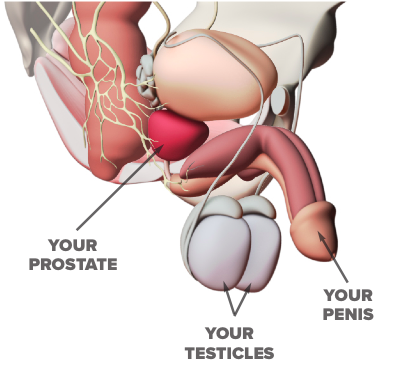Where Is My Prostate Located And What Does The Prostate Do?

Image: Princess Margaret Cancer Centre, Canada
The walnut-sized prostate gland produces a thick, milky-white fluid that becomes part of the semen, the liquid ejaculated during sexual activity. It is located in front of the rectum and just below the bladder (see illustration above). It also wraps around the upper part of the urethra, the tube that carries urine from the bladder out of the body. Counterintuitively, the top of the prostate is called the base and the bottom is called the apex.
Because the prostate is located so close to urinary and sexual organs, prostate problems can affect urination and sexual function. For example, when men reach their 40s, the prostate often begins to enlarge. Over time, it can press on the urethra and slow or even prevent the flow of urine, in much the same way that bending a running garden hose halts the flow of water. This condition is called benign prostatic hyperplasia, or BPH.
To function properly, the prostate requires adequate amounts of certain hormones, including testosterone, produced by the testicles, as well as others produced by the pituitary and adrenal glands.
Resource: HarvardHealth
Back to
YOUR PROSTATE




